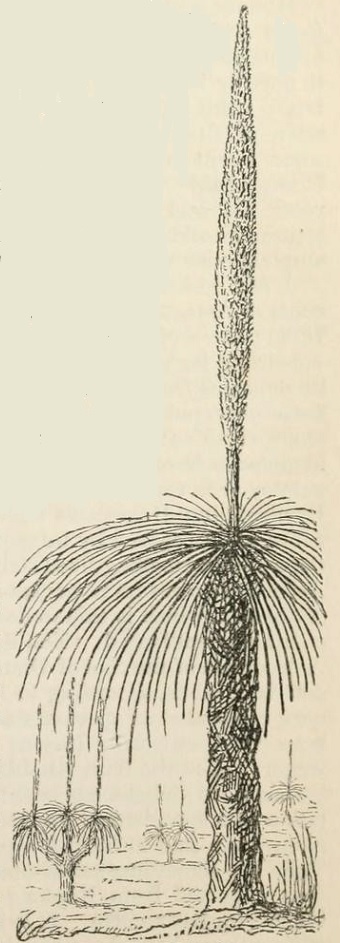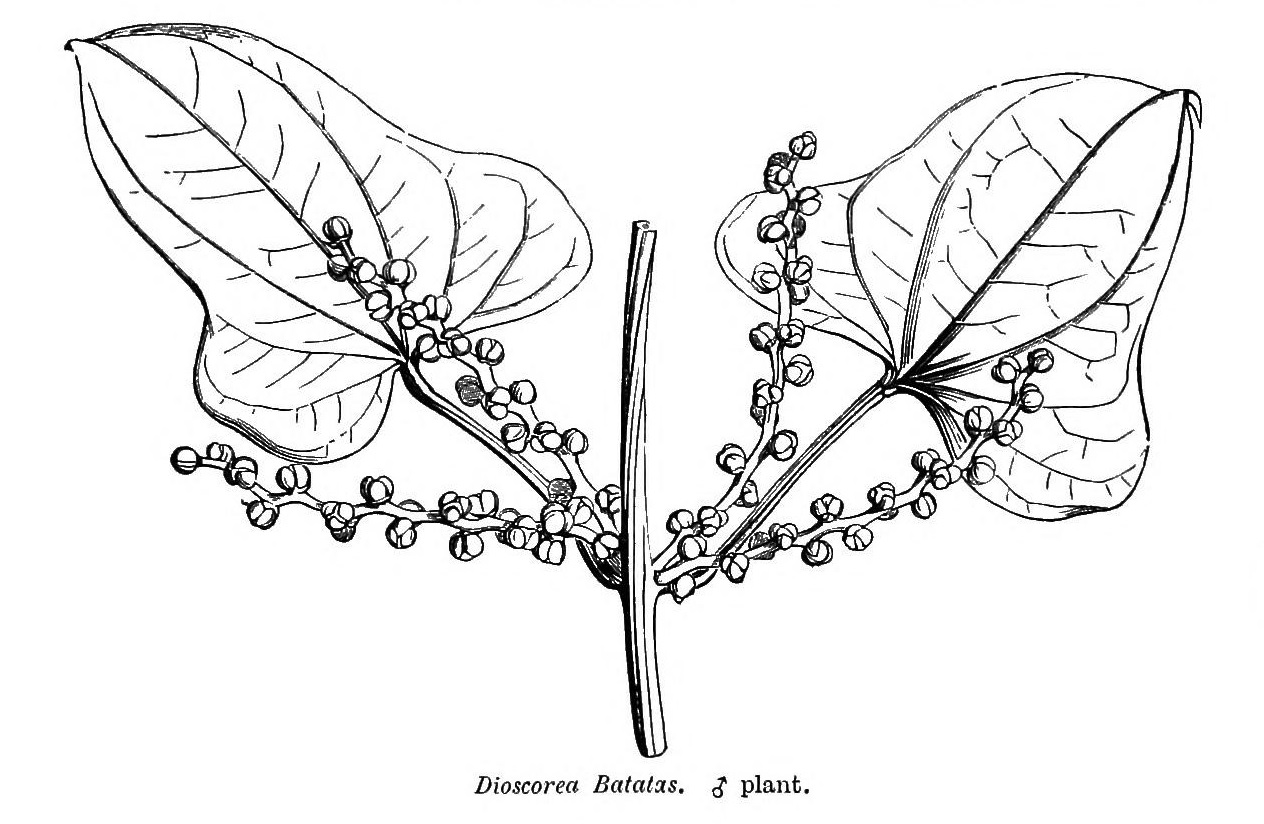|
Pandanales
Pandanales, the pandans or screw-pines, is an order of flowering plants placed in the monocot clade in the Angiosperm Phylogeny Group and Angiosperm Phylogeny Web systems. Within the monocots Pandanales are grouped in the lilioid monocots where they are in a sister group relationship with the Dioscoreales. Historically the order has consisted of a number of different families in different systems but modern classification of the order is based primarily on molecular phylogenetics despite diverse morphology which previously placed many of the families in other groupings based on apparent similarity. Members of the order have a subtropical distribution and includes trees, shrubs, and vines as well as herbaceous plants. The order consists of 5 families, 36 genera and about 1,610 species. Description Pandanales are highly diverse including large arboraceous plants of tropical rainforests and coastal areas, climbing vines and lianas, as well as very small achlorophyllous (m ... [...More Info...] [...Related Items...] OR: [Wikipedia] [Google] [Baidu] |
Lilioid Monocots
Lilioid monocots (lilioids, liliid monocots, petaloid monocots, petaloid lilioid monocots) is an informal name used for a grade (biology), grade (grouping of taxa with common characteristics) of five monocot order (biology), orders (Petrosaviales, Dioscoreales, Pandanales, Liliales and Asparagales) in which the majority of species have flowers with relatively large, coloured tepals. This characteristic is similar to that found in Lilium, lilies ("lily-like"). Petaloid monocots refers to the flowers having tepals which all resemble petals (petaloid). The taxonomic terms Lilianae or Liliiflorae have also been applied to this assemblage at various times. From the early nineteenth century many of the species in this group of plants were put into a very broadly defined family, Liliaceae ''sensu lato'' or ''s.l.'' (lily family). These classification systems are still found in many books and other sources. Within the monocots the Liliaceae ''s.l.'' were distinguished from the Glumaceae. ... [...More Info...] [...Related Items...] OR: [Wikipedia] [Google] [Baidu] |
Monocotyledon
Monocotyledons (), commonly referred to as monocots, ( Lilianae '' sensu'' Chase & Reveal) are flowering plants whose seeds contain only one embryonic leaf, or cotyledon. A monocot taxon has been in use for several decades, but with various ranks and under several different names. The APG IV system recognises its monophyly but does not assign it to a taxonomic rank, and instead uses the term "monocots" to refer to the group. Monocotyledons are contrasted with the dicotyledons, which have two cotyledons. Unlike the monocots however, the dicots are not monophyletic and the two cotyledons are instead the ancestral characteristic of all flowering plants. Botanists now classify dicots into the eudicots ("true dicots") and several basal lineages from which the monocots emerged. The monocots are extremely important economically, culturally, and ecologically, and make up a majority of plant biomass used in agriculture. Common crops such as dates, onions, garlic, rice, wheat, maize, ... [...More Info...] [...Related Items...] OR: [Wikipedia] [Google] [Baidu] |
Dioscoreales
The Dioscoreales are an order of monocotyledonous flowering plants, organized under modern classification systems, such as the Angiosperm Phylogeny Group or the Angiosperm Phylogeny Web. Among monocot plants, Dioscoreales are grouped with the lilioid monocots, wherein they are a sister group to the Pandanales. In total, the order Dioscoreales comprises three families, 22 genera and about 850 species. Dioscoreales contains the family Dioscoreaceae, which notably includes the yams ('' Dioscorea'') and several other bulbous and tuberous plants, some of which are heavily cultivated as staple food sources in certain countries. Certain species are found solely in arid climates (incl. parts of Southern Africa), and have adapted to this harsh environment as caudex-forming, perennial caudiciformes, including '' Dioscorea elephantipes'', the "elephant's foot" or "elephant-foot yam". Older systems tended to place all lilioid monocots with reticulate veined leaves (such as Smilacac ... [...More Info...] [...Related Items...] OR: [Wikipedia] [Google] [Baidu] |
Stemonaceae
The Stemonaceae are a family of monocotyledonous flowering plants placed in the order Pandanales. The family consists of four genera with ca 37 known species distributed in areas with seasonal climate across Southeast Asia and tropical Australia. One native species is found in the United States. In earlier systems the family was called Roxburghiaceae, after ''Roxburghia'', now ''Stemona''. Description The stems may be erect or trailing, green or yellow-green, or sometimes reddish. Leaves are dark green and also alternate in the majority of the members. Flowers are borne in short cymes, arising from the lower parts of the plant. Seeds are ellipsoidal or globular in shape. As in other members of the Pandanales, the flower morphology in the Stemonaceae is distinctive and rather atypical for monocots, whose floral anatomy is three-parted (trimerous). [...More Info...] [...Related Items...] OR: [Wikipedia] [Google] [Baidu] |
Velloziaceae
Velloziaceae is a family of monocotyledonous flowering plants. The APG II system, of 2003 (unchanged from the APG system, 1998), also recognizes this family, and assigns it to the order Pandanales. Relationships and evolution By contrast to other members of Pandanales the family demonstrates stricter flower morphology. Despite that, the flower structure is still quite variable and with a lot of specifics. Thus morphological analyses are not able to uncover realistic phylogenetical relationships neither appropriate taxonomy. Embryological development places the family among the amaryllids while the composition of the ovary puts it near the distinct Hypoxidaceae. However, a study regarding the pollen structure in two genera from Velloziaceae was found to be an important character and suggests some correlation but this is still a variable trait. Molecular analyses recognize five distinct genera (by including '' Talbotia'' in '' Xerophyta'' and '' Nanuza'' in '' Vellozia'' thus fo ... [...More Info...] [...Related Items...] OR: [Wikipedia] [Google] [Baidu] |
Cyclanthaceae
Cyclanthaceae is a family of flowering plants. Taxonomy Earlier systems, such as the Cronquist system and the Takhtajan system, placed it as the sole family in the order Cyclanthales. In the classification system of Rolf Dahlgren, Dahlgren the Cyclanthaceae were the sole family of the order Cyclanthales in the superorder Cyclanthiflorae (also called Cyclanthanae). The APG system (1998) and the APG II system (2003) assign it to the order Pandanales in the clade monocots. The family occurs in the neotropics and consists of 12 genera with a total of ca 230 known species (Christenhusz & Byng 2016 ). List of genera *''Asplundia'' Harling *''Carludovica'' Ruiz & Pav. *''Chorigyne'' R.Erikss. *''Cyclanthus'' Poit. *''Dianthoveus'' Hammel & Wilder *''Dicranopygium'' Harling *''Evodianthus'' Oerst. *''Ludovia'' Brongn. *''Schultesiophytum'' Harling *''Sphaeradenia'' Harling *''Stelestylis'' Drude *''Thoracocarpus'' Harling Cultivation and uses The family is probably best known for '' ... [...More Info...] [...Related Items...] OR: [Wikipedia] [Google] [Baidu] |
Triuridaceae
Triuridaceae are a family of tropical and subtropical flowering plants, including nine genera with a total of approximately 55 known species. All members lack chlorophyll and are mycoheterotrophic (obtain food by digesting intracellular fungi, often erroneously called 'saprophytes'). The heterotrophic lifestyle of these plants has resulted in a loss of xylem vessels and stomata, and a reduction of leaves to scales. The flowers of Triuridaceae have tepals which are fused at the base and contain 10 to many free carpels. Systematics The circumscription of Triuridaceae has been unstable and some taxa may be paraphyletic. Triuridaceae have been allied with Alismataceae (based on the free carpels) but the APG III system (2009) places them among the non-commelinid monocots, in the Order Pandanales. The genus ''Lacandonia'' is sometimes placed in its own family, Lacandoniaceae. Triuridaceae are included in the Kew Royal Botanical Garden World Checklist of Selected Plant Families and ... [...More Info...] [...Related Items...] OR: [Wikipedia] [Google] [Baidu] |
Flowering Plant
Flowering plants are plants that bear flowers and fruits, and form the clade Angiospermae (). The term angiosperm is derived from the Ancient Greek, Greek words (; 'container, vessel') and (; 'seed'), meaning that the seeds are enclosed within a fruit. The group was formerly called Magnoliophyta. Angiosperms are by far the most diverse group of Embryophyte, land plants with 64 Order (biology), orders, 416 Family (biology), families, approximately 13,000 known Genus, genera and 300,000 known species. They include all forbs (flowering plants without a woody Plant stem, stem), grasses and grass-like plants, a vast majority of broad-leaved trees, shrubs and vines, and most aquatic plants. Angiosperms are distinguished from the other major seed plant clade, the gymnosperms, by having flowers, xylem consisting of vessel elements instead of tracheids, endosperm within their seeds, and fruits that completely envelop the seeds. The ancestors of flowering plants diverged from the commo ... [...More Info...] [...Related Items...] OR: [Wikipedia] [Google] [Baidu] |
Herbaceous
Herbaceous plants are vascular plants that have no persistent woody stems above ground. This broad category of plants includes many perennials, and nearly all annuals and biennials. Definitions of "herb" and "herbaceous" The fourth edition of the '' Shorter Oxford English Dictionary'' defines "herb" as: # "A plant whose stem does not become woody and persistent (as in a tree or shrub) but remains soft and succulent, and dies (completely or down to the root) after flowering"; # "A (freq. aromatic) plant used for flavouring or scent, in medicine, etc.". (See: Herb) The same dictionary defines "herbaceous" as: # "Of the nature of a herb; esp. not forming a woody stem but dying down to the root each year"; # "BOTANY Resembling a leaf in colour or texture. Opp. scarious". Botanical sources differ from each other on the definition of "herb". For instance, the Hunt Institute for Botanical Documentation includes the condition "when persisting over more than one growing season, the ... [...More Info...] [...Related Items...] OR: [Wikipedia] [Google] [Baidu] |
Species
A species () is often defined as the largest group of organisms in which any two individuals of the appropriate sexes or mating types can produce fertile offspring, typically by sexual reproduction. It is the basic unit of Taxonomy (biology), classification and a taxonomic rank of an organism, as well as a unit of biodiversity. Other ways of defining species include their karyotype, DNA sequence, morphology (biology), morphology, behaviour, or ecological niche. In addition, palaeontologists use the concept of the chronospecies since fossil reproduction cannot be examined. The most recent rigorous estimate for the total number of species of eukaryotes is between 8 and 8.7 million. About 14% of these had been described by 2011. All species (except viruses) are given a binomial nomenclature, two-part name, a "binomen". The first part of a binomen is the name of a genus to which the species belongs. The second part is called the specific name (zoology), specific name or the specific ... [...More Info...] [...Related Items...] OR: [Wikipedia] [Google] [Baidu] |
Talbotia Elegans0
''Talbotia'' may refer to: * ''Talbotia'' (plant), a monotypic genus of monocotyledonous flowering plants * ''Pieris'' (butterfly) or ''Talbotia'', a genus of butterflies {{genus disambiguation ... [...More Info...] [...Related Items...] OR: [Wikipedia] [Google] [Baidu] |
Vines
A vine is any plant with a growth habit of trailing or wikt:scandent, scandent (that is, climbing) stems, lianas, or runners. The word ''vine'' can also refer to such stems or runners themselves, for instance, when used in wicker work.Jackson; Benjamin; Daydon (1928). ''A Glossary of Botanic Terms with their Derivation and Accent'', 4th ed. London: Gerald Duckworth & Co. In parts of the world, including the British Isles, the term "vine" usually applies exclusively to grapevines, while the term "climber" is used for all climbing plants. Growth forms Certain plants always grow as vines, while a few grow as vines only part of the time. For instance, poison ivy and Solanum dulcamara, bittersweet can grow as low shrubs when support is not available, but will become vines when support is available. A vine displays a growth form based on very long stems. This has two purposes. A vine may use rock exposures, other plants, or other supports for growth rather than investing energ ... [...More Info...] [...Related Items...] OR: [Wikipedia] [Google] [Baidu] |



